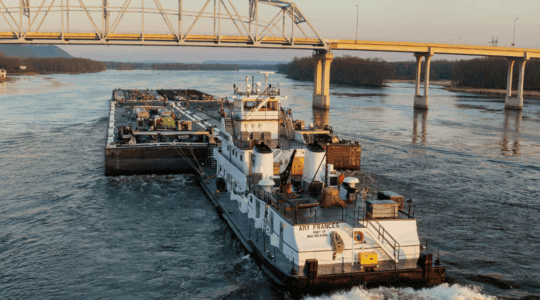Marine
Your Crew, Your Risk: A Practical Guide to Jones Act Compliance and Coverage
Navigate Jones Act Liability with Confidence
September 25, 2025
This post originally was published by Marine Log and is reprinted here with permission.
In the commercial marine industry, protecting your crew isn’t just the right thing to do—it’s a legal and financial imperative. Yet among operators, shipowners, and even seasoned insurance professionals, crew liability remains one of the most misunderstood exposures, especially when it comes to the Jones Act and how it interacts with protection and indemnity (P&I) coverage.
From classification disputes to court rulings and denied claims, the complexity around who qualifies as a "seaman," how liability is triggered, and what policies respond continues to grow, particularly as vessel operations diversify and claims increase in both frequency and cost.
Understanding the Jones Act: Liability and Exposure at Sea
The Jones Act (Merchant Marine Act of 1920) allows seamen injured in the course of their duties to sue their employer for negligence. It offers a path to recover from pain and suffering, lost future earnings, and maintenance and cure (daily living and medical costs).
To qualify as a "seaman," a worker must contribute to the function of a vessel and have a connection to a vessel in navigation that is substantial in both duration and nature. While the law doesn’t define a specific percentage, a general rule of thumb—supported by the U.S. Supreme Court in Chandris, Inc. v. Latsis (1995)—is that workers who spend at least 30% of their time aboard vessels typically meet the requirement. This interpretation has guided courts and employers, but legal challenges still arise around vessel status and job classification.
In Martinez v. Signature Seafoods, a processor on a moored barge was denied coverage because the barge wasn’t “in navigation.” Meanwhile, a worker on a 20-foot skiff used for transport or line handling might qualify. If your employees are on the water, even part-time, you may already be exposed.
Unseaworthiness and Employer Negligence
In Perkins v. American Electric Power, a second mate was injured while using a defective ratchet. The court found the vessel unseaworthy and the employer negligent, despite claims that the crew member had failed to follow protocol. Failing to provide safe equipment and proper training was enough to establish liability. For operators, particularly in tug, tow, and barge operations, the case highlights how routine oversights can have major legal and financial consequences.
Not All P&I Coverage Is Created Equal
P&I insurance is the go-to protection for crew-related claims. However, not all policies automatically include Jones Act liability. Some exclude cumulative trauma or unseaworthiness claims. Employers often assume they’re covered—until they’re not.
Even modest injuries can exceed $250,000 when you include legal defense, wage loss, and long-tail claim development. Vague coverage language can quickly turn a manageable incident into a costly disruption.
The Classification Question: The Jones Act, LHWCA, or Workers’ Comp?
One persistent challenge is identifying which law applies to which worker:
- Jones Act (Seamen): Workers on a vessel in navigation; eligible to sue for negligence
- Longshore and Harbor Workers’ Compensation Act (LHWCA): Covers shipbuilders, dockside labor, and others not classified as seamen
- State Workers’ Comp: For land-based staff, such as warehouse or office employees
Misclassification leads to denied claims, litigation, and compliance issues. It concerns more than paperwork; it’s foundational to your insurance strategy.
Trending Claims: What Insurers Are Watching
Crew-related claims are increasing in both frequency and severity. Medical costs, wage inflation, and large settlements are driving up exposure. Courts are also more closely reviewing safety records, training procedures, and maintenance logs. As a result, insurers are digging deeper, asking tougher questions, and pricing them accordingly at renewal.
Five Steps to Strengthen Your Crew Liability Protection
Protecting your crew—and your business—starts with a few proactive steps:
- Clarify worker classifications. Identify who meets the seaman threshold, even if they work aboard vessels only part-time.
- Review and update P&I coverage. Ensure your policy includes explicit Jones Act coverage and no critical exclusions.
- Document vessel status. Even small boats may meet the legal definition of “in navigation.”
- Invest in technology. Use digital tools to log crew time, vessel use, maintenance, and training records.
- Strengthening safety culture. Many Jones Act claims are preventable. Proactive safety training and documentation go a long way with both courts and carriers.
Quick Audit: Are You Exposed?
If you answer “yes” to any of the questions below, you likely have exposures that should be carefully addressed.
- Do any employees spend time aboard vessels, even part-time?
- Are they classified correctly under the Jones Act, LHWCA, or workers’ comp?
- Does your P&I policy clearly include crew liability and unseaworthiness coverage?
- Are vessel use and crew time tracked digitally or manually?
- Have you reviewed recent injury claims within your operation?
Crew Coverage Is a Strategic Issue—Not Just a Policy Detail
Crew liability isn’t buried in the fine print anymore; it’s front and center in renewals, legal disputes, and safety reviews. Knowing who’s covered, how they’re classified, and whether your policies match your operations is critical.
Marine businesses that get this right don’t just reduce claims, they improve insurability, earn better terms, and gain a competitive edge.
Related Reading: Marine Contracts: Avoiding Insurance Gaps and Liability Risk
The above information does not constitute advice. Always contact your insurance broker or trusted advisor for insurance-related questions.
Authored by
With over 20 years of experience in the marine insurance industry, Sabrina serves as Hylant’s Marine Practice Managing Director. Sabrina works to grow Hylant’s expertise in the areas of hull, P&I, and marine liability and manufacturing.



